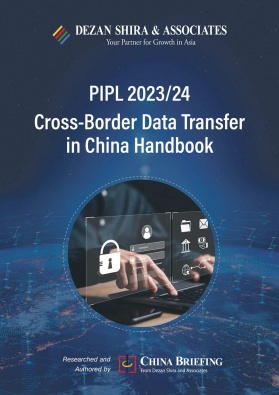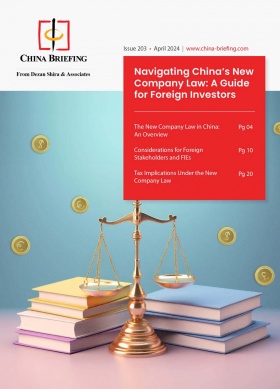Asia Transfer Pricing Brief: Q3 2024
In our Asia Transfer Pricing Brief for Q3 2024, we highlight the latest transfer pricing developments across Asian markets:
- OECD released the ninth edition of Tax Policy Reforms: Many countries have prepared legislation ahead of implementing Pillar Two of the global tax agreement
- OECD and IFMMSD jointly released A transfer pricing framework for lithium
- OECD takes a further step in the implementation of amount B of Pillar One
OCED: Many countries have prepared legislation ahead of implementing Pillar II of the global tax agreement
On September 30, 2024, the Organization for Economic Co-operation and Development (OECD) released the ninth edition of Tax Policy Reforms: OECD and Selected Partner Economies (Tax Policy Reforms 2024), an annual publication that provides comparative information on tax reforms across countries and tracks tax policy developments over time.
This Tax Policy Reforms 2024 covers the tax policy reforms introduced or announced in 2023 in 90 member jurisdictions of the OECD/G20 Inclusive Framework on Base Erosion and Profit Shifting (OECD/G20 Inclusive Framework), including all OECD countries.
Since the launch of the “Two-Pillar” global tax reform on October 8, 2021, Pillar Two has made significant progress, while progress on Pillar One remains slow and uncertain. According to the Tax Policy Reforms 2024, 36 jurisdictions have implemented or plan to implement a global minimum tax in 2024, nine jurisdictions are expected to enact legislation taking effect from 2025, and another seven jurisdictions are also preparing for the implementation of a global minimum tax.
OECD analysis estimates that the reallocation of taxing rights from lower to higher-taxed jurisdictions could raise an additional US$17.4-31.7 billion in annual revenues, based on averages from the 2017-2021 period. The Pillar Two global minimum tax is expected to increase taxation on currently low-taxed profits, raising global corporate income tax (CIT) revenues by US$155-192 billion.
Further progress has been made towards implementing the Two-Pillar solution
In July 2023, the member jurisdiction of the OECD/G20 Inclusive Framework agreed on an Outcome Statement on the Two-Pillar Solution to Address the Tax Challenges Arising from the Digitalization of the Economy. This statement recognizes the significant progress made over more than 20 months of negotiations and summarizes the package of deliverables developed since 2021:
- On Pillar One, while negotiations are still ongoing, the text of the Multilateral Convention on Amount A was released on October 11, 2023, and the report on Amount B of Pillar One was released on February 19, 2024.
- On Pillar Two, in 2023 the OECD published further documentation on the implementation of the Global Anti-Base Erosion (GloBE) rules, implementing the Global Minimum Tax. This documentation features French and German translations of the rules, as well as new administrative guidance.
- In October 2021, the member jurisdiction of the OECD/G20 Inclusive Framework agreed on a Two-Pillar Solution to reform the international tax framework in response to the challenges of the digitalization of the economy and ensure that MNEs pay a fair share of tax wherever they operate and generate profits.
An increasing number of jurisdictions are taking steps towards implementing the GloBE Rules into domestic law, with the global minimum tax (income inclusion and/or domestic minimum top-up tax) starting to apply from the beginning of 2024. Due to the interlocking nature of the GloBE Rules and the backstop mechanisms incorporated in the rules, there is a strong incentive for jurisdictions to implement them as well as a domestic minimum top-up tax.
|
Status of Pillar Two implementation |
|
| Status | Jurisdiction |
| Legislation expected to be effective as of 2024 (incl. EU directive with no deferral, draft legislation, stated intention) | AUT, AUS, BRB, BEL, BGA, CAN, CHE, CYP, CZE, DEU, DNK, ESP, FIN, FRA, GBR, GIB, GRC, HRV, HUN, IRL, ITA, JPN, KOR, LIE, LUX, NLD, NOR, POL, PRT, ROU, SVK, SVN, SWE, VNM, ZAF, ZWE |
| Legislation expected to be effective as of 2025 (incl. enacted or draft legislation, stated intention) | GGY, HKG, IMN, ISL, JEY, MYS, NZL, SGP, THA |
| EU directive (deferring implementation in a whole) | EST, LTU, LVA, MLT |
| Considering (legal framework in place) | ARE, IND, MUS, QAT |
| Other steps | ARG, BHS, BMU, BRA, COL, NGA, UKR |
Note: The information in the table above is current as of April 2024.
OCED and IFMMSD jointly released A transfer pricing framework for lithium
On August 12, OECD and the Intergovernmental Forum on Mining, Minerals, Metals and Sustainable Development (IFMMSD) jointly released Setting Mineral Prices: A Framework for Transfer Pricing of Lithium Products, which explores how to address the complex issue of transfer pricing of lithium in the context of the rapid growth of the electric vehicle industry.
This mineral pricing schedule complements the practice note Determining the Price of Minerals: A Transfer Pricing Framework (Viola et al., 2023). The practice note provides a framework to identify the primary economic factors that can influence the pricing of minerals (“mineral pricing framework”) using transfer pricing principles. This schedule demonstrates how the framework can be applied to lithium brines and lithium minerals.
Importantly, this mineral pricing schedule does not replace, alter, or affect the OECD Transfer Pricing Guidelines (TPGs) (OECD, 2022) interpretation of Article 9 OECD Model Tax Convention (OECD, 2017) or the application of countries’ domestic transfer pricing laws and the interpretation of those laws by the respective tax administration.
Framework: Using the comparable uncontrolled price method to determine the price of minerals sold
In applying the comparable uncontrolled price method to related-party mineral sales, the comparability factors or economically relevant characteristics outlined in Paragraph 1.36 of the 2022 OECD TPGs are to be considered.
Paragraph 1.37 of the 2022 OECD TPGs further notes that the extent to which each factor is economically relevant in a particular transaction depends on the extent to which it would be taken into account by independent enterprises when evaluating the terms of the same transaction were to occur between them.
An accurate delineation of the arrangement should be undertaken in accordance with Chapter I of the 2022 OECD TPGs, considering all five comparability factors and the economically relevant characteristics of the transaction. Considering this, there are three primary comparability or economically relevant factors to consider that are particularly relevant when applying the comparable uncontrolled price method to scenarios involving related-party mineral sales. These are as follows:
- the characteristics of the product, such as the physical features and quality of the commodity;
- the economic circumstances that existed at the time the sales agreement was entered into, that is, the period of the arrangement; and
- contractual terms, such as quantity transacted, transportation terms, payment terms, insurance, quotation periods, foreign exchange, and treatment and refining charges.
This framework is based on the following conditions:
- The associated mining enterprise (the seller) is part of a larger multinational mining group.
- The mining enterprise has access to market knowledge and intelligence from its sister companies or parent entity, recognizing that the production mine is one of a finite number of production entities in the world.
- The mining enterprise, operating independently, would assess all available options with the benefit of market intelligence and sell at the highest possible price, considering its commercial objectives.
Lithium pricing fundamentals
Lithium chemicals are valued for their lithium content and purity, with most used for battery production. Demand for lithium is closely linked to electric vehicles and battery production. Outside of batteries, lithium is used in other industrial applications, such as glass and ceramics, lithium grease lubricants, and aircraft construction.
Growth in electric vehicles continues to drive lithium demand. Global electric vehicle sales grew from 6.4 million in 2021 to 10.1 million in 2022 (+60%) and reached 13.7 million in 2023. A million electric vehicles consume between 40 and 50 kMT LCE. In 2023, LCE consumption in electric vehicles grew by around 150 kMT LCE. In 2023, with China accounting for 60 percent of global electric vehicle sales.
Governments are increasingly encouraging the transition to electric vehicles through incentives and regulatory targets. Europe and China reduced subsidies in 2023, while the United States offers up to US$7,500 in federal tax credits for clean-energy vehicles that meet certain US rules regarding critical minerals and battery components (Inflation Reduction Act of 2022).
Although the demand for lithium seems sustainable, there are some risks from non-lithium-ion batteries. For instance, in February 2023, Hina Battery and Sehol unveiled the first test vehicle with sodium-ion batteries. Hydrogen and flow vanadium are other, albeit less likely, alternatives.
Comparability adjustments
The demand for clean energy sources, in the context of the energy transition and the increased demand for electric vehicles, directly impacts the lithium market. These economic factors led to the creation of lithium carbonate and lithium hydroxide price assessments. From a transfer pricing perspective, this allows tax administrations to account for the temporal factors arising from global supply and demand by referencing price assessments that correspond to the period in which related-party sales contracts are entered into and/or when the specific transactions occurred (i.e., the date of when the good was sold if referencing an index assessment). This is particularly important, given that the current volatility of the lithium market and the relevant period in which the transaction occurred will have a significant bearing on the price.
By referencing a lithium price assessment from a reputable price-reporting agency, one is able to account for global supply and demand factors, as well as economically significant aspects of the product, such as its grade, purity, and specifications.
The general structure of the production entities can materially affect lithium prices. For several years, most lithium was produced by an oligopoly of producers: Albemarle, Sociedad Quimica y Minera de Chile, and Livent Corporation. Other producers have been added to this list, including China’s Tianqi Lithium and Australia’s Allkem. Recently, Livent and Allkem announced plans to merge, creating a company that they forecast will have the world’s third-largest production capacity by 2027. This will result in a few dominant players in the lithium industry who could influence the market price of lithium.
The structure of the consumption entities should also be considered. At the time of writing, most large economies involved in the battery value chain had one to three major companies, with fewer than a dozen significant cathode producers globally. This type of market structure, combined with the strategic nature of the battery supply chain and the intervention of governments to secure supplies, could impact future prices.
The production history, reliability of a lithium producer, and the size of the production mine itself may influence the price. Generally, a track record of stable production (including consistent quality of lithium) and larger mines can attract a premium on price. Smaller or newly developed mines may offer discounts to attract buyers, which would be expected to decrease over time as a mine establishes its supplier credentials. For instance, it is common for new lithium producers to sell their lithium carbonate or hydroxide production as technical grade during the first few years of production while they refine their processes and learn to comply with battery-grade specifications. As a result, their earlier production is sold at a discount compared to the later, battery-grade production.
OECD/G20 Inclusive Framework takes a further step in the implementation of Amount B of Pillar One
On September 26, 2024, the OECD/G20 Inclusive Framework published a Model Competent Authority Agreement (MCAA) to facilitate the implementation of its political commitment to Amount B of Pillar One. This practical tool is designed to be particularly beneficial for jurisdictions with limited resources and data availability.
At the beginning of 2024, the OECD/G20 Inclusive Framework released a report on Amount B of Pillar One. This report provides a simplified and streamlined pricing framework for baseline marketing and distribution activities that is expected to reduce transfer pricing disputes, and compliance costs, and enhance tax certainty for tax administrations and taxpayers alike.
The implementation of Amount B is supported by the political commitment from all Inclusive Framework members to take all reasonable steps to relieve potential double taxation that may arise from the application of the simplified and streamlined approach by a covered jurisdiction where there is a bilateral tax treaty in effect.
Member jurisdictions can use the model competent authority agreement included in this note to implement the political commitment where a tax treaty is in place. Entering into a competent authority agreement is optional for jurisdictions. The absence of such an agreement does not, in itself, impede the implementation of political commitment, which can be implemented by jurisdictions through other means, considering their legal and administrative systems.
Inclusive Framework members wishing to extend the political commitment to jurisdictions not included in the list of covered jurisdictions may also use this model.
The model includes optional provisions, allowing competent authorities to customize the agreement to the specific circumstances of the applicable tax treaty (e.g., ambulatory reference to the OECD Transfer Pricing Guidelines). Similarly, the text of this MCAA should be considered as suggested language only; therefore, jurisdictions are free to modify the specific language of the different provisions in their bilateral negotiations.
When including the optional provisions for ambulatory references in their competent authority agreements, jurisdictions should bear in mind that future updates to the OECD Transfer Pricing Guidelines regarding the simplified and streamlined approach may become applicable.
About the Brief:
Asia remains one of the world’s primary investment hubs, attracting an increasing number of businesses that have either expanded or are contemplating expansion into its high-performing emerging markets. For multinational enterprises (MNEs), transfer pricing is an important issue that demands attention sooner or later.
Transfer pricing concerns the pricing arrangements between associated enterprises (AE) operating in different tax jurisdictions for their intercompany transactions. In alignment with international regulations, Asian taxpayers engaged in transactions with other group entities must substantiate that these dealings adhere to the “arm’s length standard.” This standard necessitates taxpayers to prove that their transactions with related parties mirror those with third parties in a similar manner and under comparable conditions.
Nevertheless, the transfer pricing landscape has grown more complex in recent years and can be challenging for MNEs to navigate successfully. Apart from the international transfer pricing initiatives spearheaded by the Organization for Economic Co-operation and Development (OECD), individual governments are intensifying their own tax and regulatory frameworks overseeing transfer pricing. This heightened focus aims to protect their tax revenue amid financial constraints caused by the three-year COVID-19 pandemic and to manage domestic jurisdiction compliance in a dynamic global business environment.
In this scenario, it is crucial for foreign investors to stay on top of international and regional transfer pricing updates in order to effectively address their global transfer pricing concerns. Consequently, starting Q3 2023, our team of Dezan & Shira transfer pricing and tax professionals have taken the initiative to produce a quarterly Asia Transfer Pricing Brief. This brief will succinctly summarize timely transfer pricing news, aiming to provide you and your Asia-based business with a strategic advantage in managing international taxation issues and ensuring compliance.
Dezan Shira & Associates’ transfer pricing practice helps companies conduct transactions with related parties to deal with transfer pricing issues. The services provided by our tax professionals are comprehensive and tailored to each client’s individual needs, often arising from the uniqueness of its business operations. For any support regarding transfer pricing documentation, benchmark study, tax audits, and transfer pricing policy monitoring, please contact China@dezshira.com.
About Us
China Briefing is one of five regional Asia Briefing publications, supported by Dezan Shira & Associates. For a complimentary subscription to China Briefing’s content products, please click here.
Dezan Shira & Associates assists foreign investors into China and has done so since 1992 through offices in Beijing, Tianjin, Dalian, Qingdao, Shanghai, Hangzhou, Ningbo, Suzhou, Guangzhou, Haikou, Zhongshan, Shenzhen, and Hong Kong. We also have offices in Vietnam, Indonesia, Singapore, United States, Germany, Italy, India, and Dubai (UAE) and partner firms assisting foreign investors in The Philippines, Malaysia, Thailand, Bangladesh, and Australia. For assistance in China, please contact the firm at china@dezshira.com or visit our website at www.dezshira.com.
- Previous Article China New Pilot Program Removes Foreign Ownership Caps on Telecom and Data Centers
- Next Article China-Austria Trade and Investment Profile and Key Developments

























